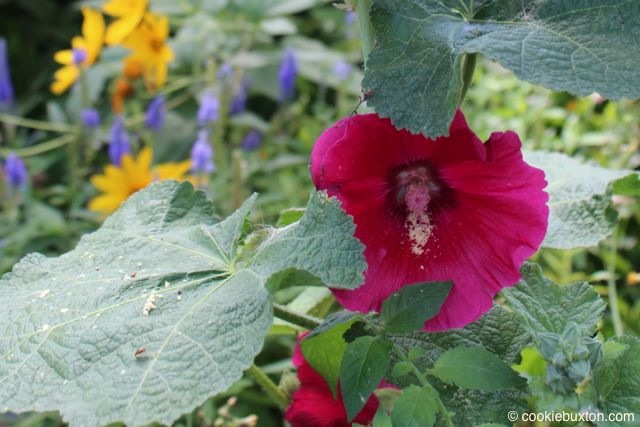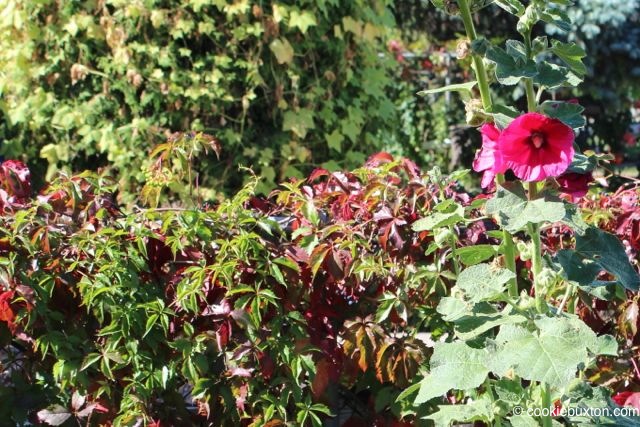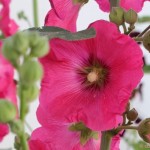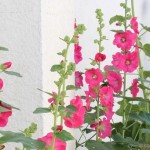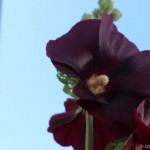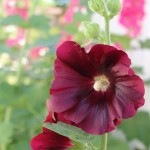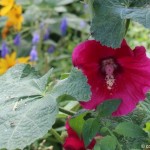Old-fashioned Hollyhocks in the Urban Garden
Many people have seen colourful beds of tall hollyhocks blooming in farm gardens, alongside an old barn or wooden shed, or backed by white planking along the sunny side of a country home. The lovely flowers, in white, pink, rose and purple, opening along the length of the lanky hollyhock stems, truly are memorable.
New gardeners are beginning to discover this old-fashioned favourite, which makes a handsome feature plant growing at the back of the border, or along the south and east-facing walls of homes. Between my neighbour Anne’s garden and my garden, in which I welcomed a solitary volunteer hollyhock this year, we have a beautiful range of hollyhock flower colours. Anne has dedicated a long patch of garden along the west wall of her home, which is open to the light from the south as well as the west, for growing hollyhocks. Some years back, we shared a stretch of hollyhocks growing at the back of our main gardens. Anne moved hers to their new home, and mine disappeared. This year, however, I had a gorgeous volunteer appear once again in the main garden, in a different colour from those in my neighbour’s yard.
Hollyhocks can be grown from seed as annuals. They are also sold as biennials, flowering every second year, and as perennials. If you want a perennial bed of hollyhocks in your garden, and can’t find the type, you can simply stagger the purchase of your biennials, some of which will grow in alternate seasons. At any rate, by dedicating space for growing hollyhocks, there is a strong chance that they will reappear in the garden year after year. Your reward for this easy neglect will likely be some oohs and ahs from visitors who may be surprised to see the beauty of these 6- to 10-feet-high plants.
In ideal locations, hollyhocks will thrive from sufficient sunshine and medium moisture. They grow well enough with other plants around them, but some of the garden manuals advise keeping the base area fairly open to allow air to circulate around the plants.
Then simply leave hollyhocks alone to do their own thing, and enjoy the very pretty flowers year after year after year, as they open along the length of the stem in the later days of summer.
To encourage self-seeding, you can either let the seeds fall to the ground as they normally do, or you can gather some and plant them yourself in the same area or a new bed elsewhere. After that, nature will takes its course, and flowers will bloom this year or the next, depending on what kind of seeds you obtained. Then, if you are fortunate, you can enjoy these long-legged beauties in your urban garden for decades without much effort from anybody.
To view the gallery images in larger format, click on any of the gallery photographs, then click on the right side of the photograph to advance.
Photo ID: 2013-10_98-104
Photo location; 98 – 100, home garden; 101 to 104, neighbour’s garden
Photos & Text: NK
Copyright: cookiebuxton.com
